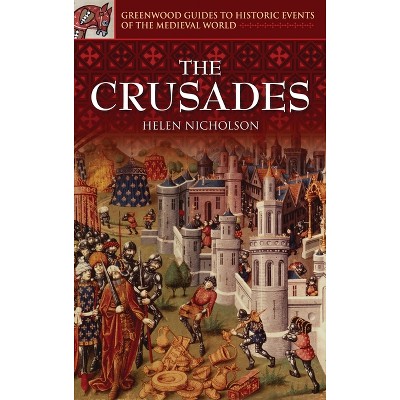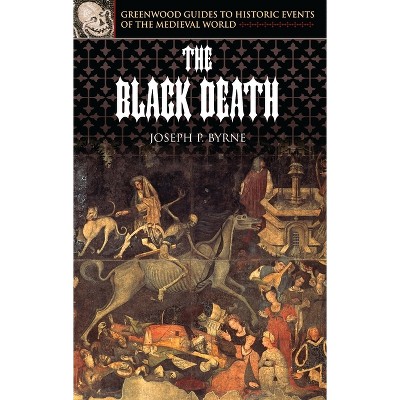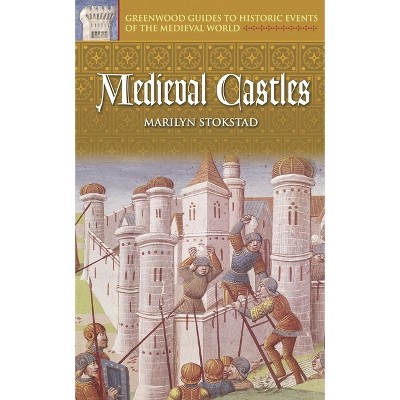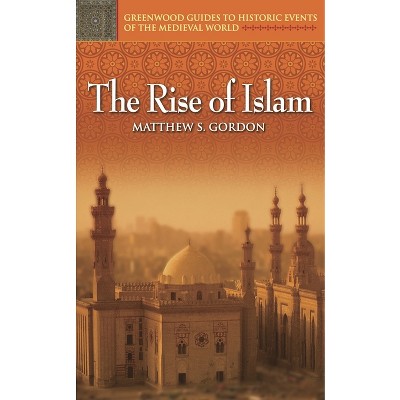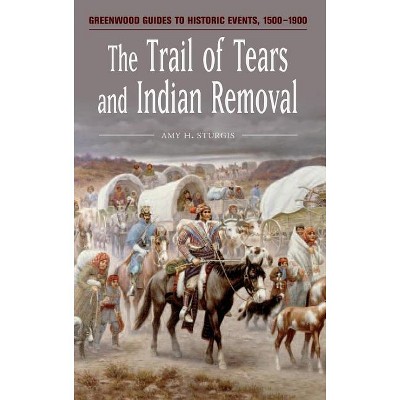Sponsored

The Puebloan Society of Chaco Canyon - (Greenwood Guides to Historic Events of the Medieval World) Annotated by Paul F Reed (Hardcover)
In Stock
Sponsored
About this item
Highlights
- To veteran travelers of the American Southwest, the name Chaco Canyon invokes an inaccessible, vast land of tremendous vistas and huge, empty stone houses.
- About the Author: PAUL F. REED is a Preservation Archaeologist with the Center for Desert Archaeology, Tucson, Arizona, and currently works as the Chaco Scholar at Salmon Ruins, New Mexico.
- 240 Pages
- History, Europe
- Series Name: Greenwood Guides to Historic Events of the Medieval World
Description
About the Book
To veteran travelers of the American Southwest, the name Chaco Canyon invokes an inaccessible, vast land of tremendous vistas and huge, empty stone houses. Today, the Canyon appears as a barren land and most visitors are struck by its apparent inhospitable nature. Yet almost 1000 years ago, during the Medieval period, Chaco Canyon was the hub of a flourishing Pueblo Indian society, with 12 multi-story great houses built of stone and wood, a dozen great kivas (large, subterranean ceremonial structures), and hundreds of smaller habitation sites, pueblos along the intermittent drainage known today as Chaco Wash. This society peaked in the year AD 1100, when more than 150 Chacoan towns, in addition to the 12 great houses in Chaco Canyon, and perhaps 30,000 people across the greater San Juan Basin of the southwestern United States were affiliated with Chaco. This landmass, which extends across portions of the four modern states of New Mexico, Arizona, Utah, and Colorado, is roughly equal in size to the country of Ireland.
Chacoan society endured for more than 200 hundred years, evolving and changing in the period from AD 950 to about 1150. The peak of Chacoan society can be more narrowly dated from AD 1020 to 1130. Undoubtedly, many leaders came and went during these hundred years. But, we have no written records to name these leaders. Unlike the history of other continents, in the Americas, the absence of written aboriginal languages means that written chronologies of the events, processes, and lives of people do not exist. This simple fact makes reconstruction and understanding of America's pre-European past very challenging. The archaeological record does speak to us. Thematic chapters guide readers to the emergence of Chacoan society, its cultural and environmental settings, and the Pueblo people. Other chapters detail what is known of Chacoan society c. 1100, how it was settled, and where its people probably dispersed to. Also, given the nature of the topic, information about the discovery and investigations of Chacoan society by Europeans and Americans is provided. An annotated timeline provides easy reference to key dates and events. Biographical sketches offer a look at the people who have formed our thoughts about and approaches to Chacoan society, and twenty annotated excerpted primary and secondary documents walk readers through Canyon related material. A glossary of terms is provided, as are illustrations and maps. The work concludes with recommended sources for further inquiry, websites, video, and print.
Book Synopsis
To veteran travelers of the American Southwest, the name Chaco Canyon invokes an inaccessible, vast land of tremendous vistas and huge, empty stone houses. Today, the Canyon appears as a barren land and most visitors are struck by its apparent inhospitable nature. Yet almost 1000 years ago, during the Medieval period, Chaco Canyon was the hub of a flourishing Pueblo Indian society, with 12 multi-story great houses built of stone and wood, a dozen great kivas (large, subterranean ceremonial structures), and hundreds of smaller habitation sites, pueblos along the intermittent drainage known today as Chaco Wash. This society peaked in the year AD 1100, when more than 150 Chacoan towns, in addition to the 12 great houses in Chaco Canyon, and perhaps 30,000 people across the greater San Juan Basin of the southwestern United States were affiliated with Chaco. This landmass, which extends across portions of the four modern states of New Mexico, Arizona, Utah, and Colorado, is roughly equal in size to the country of Ireland.
Chacoan society endured for more than 200 hundred years, evolving and changing in the period from AD 950 to about 1150. The peak of Chacoan society can be more narrowly dated from AD 1020 to 1130. Undoubtedly, many leaders came and went during these hundred years. But, we have no written records to name these leaders. Unlike the history of other continents, in the Americas, the absence of written aboriginal languages means that written chronologies of the events, processes, and lives of people do not exist. This simple fact makes reconstruction and understanding of America's pre-European past very challenging. The archaeological record does speak to us. Thematic chapters guide readers to the emergence of Chacoan society, its cultural and environmental settings, and the Pueblo people. Other chapters detail what is known of Chacoan society c. 1100, how it was settled, and where its people probably dispersed to. Also, given the nature of the topic, information about the discovery and investigations of Chacoan society by Europeans and Americans is provided. An annotated timeline provides easy reference to key dates and events. Biographical sketches offer a look at the people who have formed our thoughts about and approaches to Chacoan society, and twenty annotated excerpted primary and secondary documents walk readers through Canyon related material. A glossary of terms is provided, as are illustrations and maps. The work concludes with recommended sources for further inquiry, websites, video, and print.Review Quotes
?[F]or libraries supporting coursework in either archaeology or American Indian history, this is a good purchase.?-Catholic Library World
?[W]ill appeal to college-level collections archaeological coverages.?-MBR Internet Bookwatch
?Recommended. Upper-division undergraduates and graduate students.?-Choice
"ÝF¨or libraries supporting coursework in either archaeology or American Indian history, this is a good purchase."-Catholic Library World
"ÝW¨ill appeal to college-level collections archaeological coverages."-MBR Internet Bookwatch
"[W]ill appeal to college-level collections archaeological coverages."-MBR Internet Bookwatch
"Recommended. Upper-division undergraduates and graduate students."-Choice
"[F]or libraries supporting coursework in either archaeology or American Indian history, this is a good purchase."-Catholic Library World
About the Author
PAUL F. REED is a Preservation Archaeologist with the Center for Desert Archaeology, Tucson, Arizona, and currently works as the Chaco Scholar at Salmon Ruins, New Mexico.





